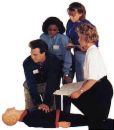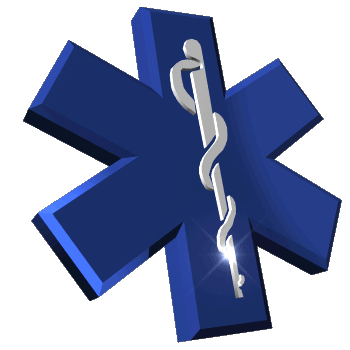

cpr@cprcpr.net
cpr@cprcpr.net





Frequently Asked
Questions on CPR
CPR Video
Is online CPR legal?
Is there a minimum age to get a CPR and First Aid certification in California?
Statistics on Car Accidents
in California
Workplace Accidents Statistics
Downward Trend in California Workplace Injuries and Accidents
OSHA Compliance for First Aid in the Workplace
Hands-Only CPR Does
Save Lives
Scene Safety
California
Training
2011-Cal Safety,California CPR Classes - All Rights Reserve - E-mail staff@Calsafety.com
1-888-722-7233
Cal Safety is a
Certified AED
Distributor
Certified AED
Distributor
FAQ
Cal Safety Training Center
California CPR Training,California CPR First Aid classes,California CPR class,California CPR certification,California First Aid.California CPR,California AED
Our EMT Instuctors have been teaching California CPR and First-Aid classes since 1989



Welcome to the Cal Safety CPR and First Aid Training website.We have been teaching California safety classes for over 20 years and we are all ways updating our material to keep up with all changes in basic emergency care.Our CPR and First Aid classes are taught by experienced Emergency Professionals in a fun and relaxed atmothphere.
Treatment for Cuts or Lacerations
* Most bleeding from a cut or laceration can be stopped with direct pressure and time (rest and elevation are also helpful).
* Cleaning with a gentle soap and water will help reduce the chance of bacterial infection.
* Antibiotic ointment (such as bacitracin) and a sterile gauze bandage will help to protect the wound from further infection and water loss until a scab forms.
Medical Treatment for Cuts and Lacerations
Just as at home, the first step is to stop the bleeding from a cut or laceration.
* If direct pressure is not enough, a blood pressure cuff can help as a temporary measure for cuts on arms and legs.
* Tourniquets are generally not helpful for cuts to the face or body.
Medication to numb the area may be given. Depending on the size and location of the cut, this may be done using various methods:
* Topical medicine
* Direct injection of anesthetic into the wound
* Injection into a regional nerve -- called "nerve block" -- (for cuts to the finger tip, the nerves at the finger base are often blocked with a series of shots)
Cleaning is often the most important aspect of good wound care.
* This may be done by first washing the adjacent skin with soap and water and removing crusted blood with diluted hydrogen peroxide.
* Next, irrigation by squirting saline at the wound under high pressure is very effective at reducing bacterial contamination in the wound.
Your doctor will decide the best way to repair your wound.
* Some minor cuts can be closed with special adhesive tapes (Steri-Strips) or tissue glue (Dermabond or Indermil). Tissue glue can be used as a barrier against common bacterial microbes. Be sure to inform the doctor if you have any allergies to these adhesive tapes.
* Deeper cuts may need stitches to repair deep structures (such as fascia, the connective tissue envelope around a muscle).
* Stitches to the skin surface can help to stop bleeding, protect underlying tissues, and lessen scarring.
Different bandages are chosen for their different material properties.
* Some materials are better because they won't stick to your cut (Telfa or Vaseline gauze).
* Others are more absorbent, provide needed surface pressure, or help to keep an injury immobile. Pressure bandages or splints may be applied, depending on the underlying injuries.
* Most bleeding from a cut or laceration can be stopped with direct pressure and time (rest and elevation are also helpful).
* Cleaning with a gentle soap and water will help reduce the chance of bacterial infection.
* Antibiotic ointment (such as bacitracin) and a sterile gauze bandage will help to protect the wound from further infection and water loss until a scab forms.
Medical Treatment for Cuts and Lacerations
Just as at home, the first step is to stop the bleeding from a cut or laceration.
* If direct pressure is not enough, a blood pressure cuff can help as a temporary measure for cuts on arms and legs.
* Tourniquets are generally not helpful for cuts to the face or body.
Medication to numb the area may be given. Depending on the size and location of the cut, this may be done using various methods:
* Topical medicine
* Direct injection of anesthetic into the wound
* Injection into a regional nerve -- called "nerve block" -- (for cuts to the finger tip, the nerves at the finger base are often blocked with a series of shots)
Cleaning is often the most important aspect of good wound care.
* This may be done by first washing the adjacent skin with soap and water and removing crusted blood with diluted hydrogen peroxide.
* Next, irrigation by squirting saline at the wound under high pressure is very effective at reducing bacterial contamination in the wound.
Your doctor will decide the best way to repair your wound.
* Some minor cuts can be closed with special adhesive tapes (Steri-Strips) or tissue glue (Dermabond or Indermil). Tissue glue can be used as a barrier against common bacterial microbes. Be sure to inform the doctor if you have any allergies to these adhesive tapes.
* Deeper cuts may need stitches to repair deep structures (such as fascia, the connective tissue envelope around a muscle).
* Stitches to the skin surface can help to stop bleeding, protect underlying tissues, and lessen scarring.
Different bandages are chosen for their different material properties.
* Some materials are better because they won't stick to your cut (Telfa or Vaseline gauze).
* Others are more absorbent, provide needed surface pressure, or help to keep an injury immobile. Pressure bandages or splints may be applied, depending on the underlying injuries.




Contact Us
888-722-7233
888-722-7233





